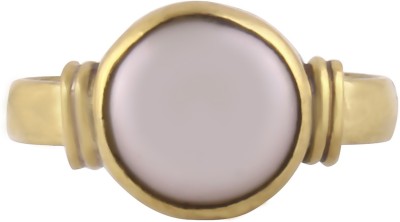SR Swasti Retail Swasti Retail 5.25 Ratti Natural Pearl (Moti) Gemstone Ring In Panchdhatu With Lab Certificate Brass Pearl Rhodium Plated Ring
Quick Overview
Product Price Comparison
This ring is suitable for Men having ring sizes between 10 to 22 as per Indian ring size standards. Size of this ring is easily ajdustable by hand. White Pearl (Moti) is used to give best results for your astrological needs. Gemstone is left open from the back side for rays to pass through and reach finger properly. Gemstone certified by a Well reputed laboratory. Panchdhatu used for this ring Pearl Gemstone is among one of the nine planetory gemstones. It has a special place in the vedic astrological tradition. StoneZone Jaipur gives you 100% Natural white, gorgeous, round shaped pearl authenticated by a world wide reputed lab GGTL. It gives the claming influence and keeps the mind relaxed and focused. It should be wear in silver. An organic gem, pearls are formed inside mollusks such as oysters and mussels. They are formed when an irritant such as a tiny stone or bit of sand gets inside the mollusk's shell. A lustrous substance, called nacre, is secreted around the object to protect the soft internal surface of the mollusk. As layer upon layer of nacre coats the irritant, a pearl is formed. Light that is reflected from these overlapping layers produces a characteristic iridescent luster. This process of building a solid pearl can take up to seven or eight years. The most valuable pearls are perfectly symmetrical, relatively large and naturally produced. They have a shimmering iridescence which is called orient luster. The principal oyster beds lay in the Persian Gulf, along the coasts of India and Sri Lanka, and in the Red Sea. Chinese pearls come mainly from freshwater rivers and ponds, whereas Japanese pearls are found near the coast in salt water. There are many types of pearls: natural pearls (made without human interference), cultured pearls (made when a foreign substance is intentionally inserted into a living oyster. This method was first used in 1893),


